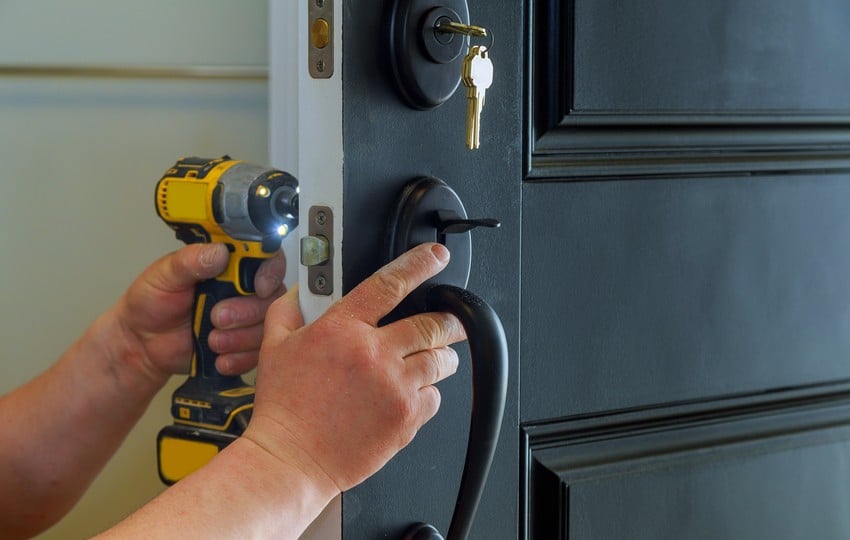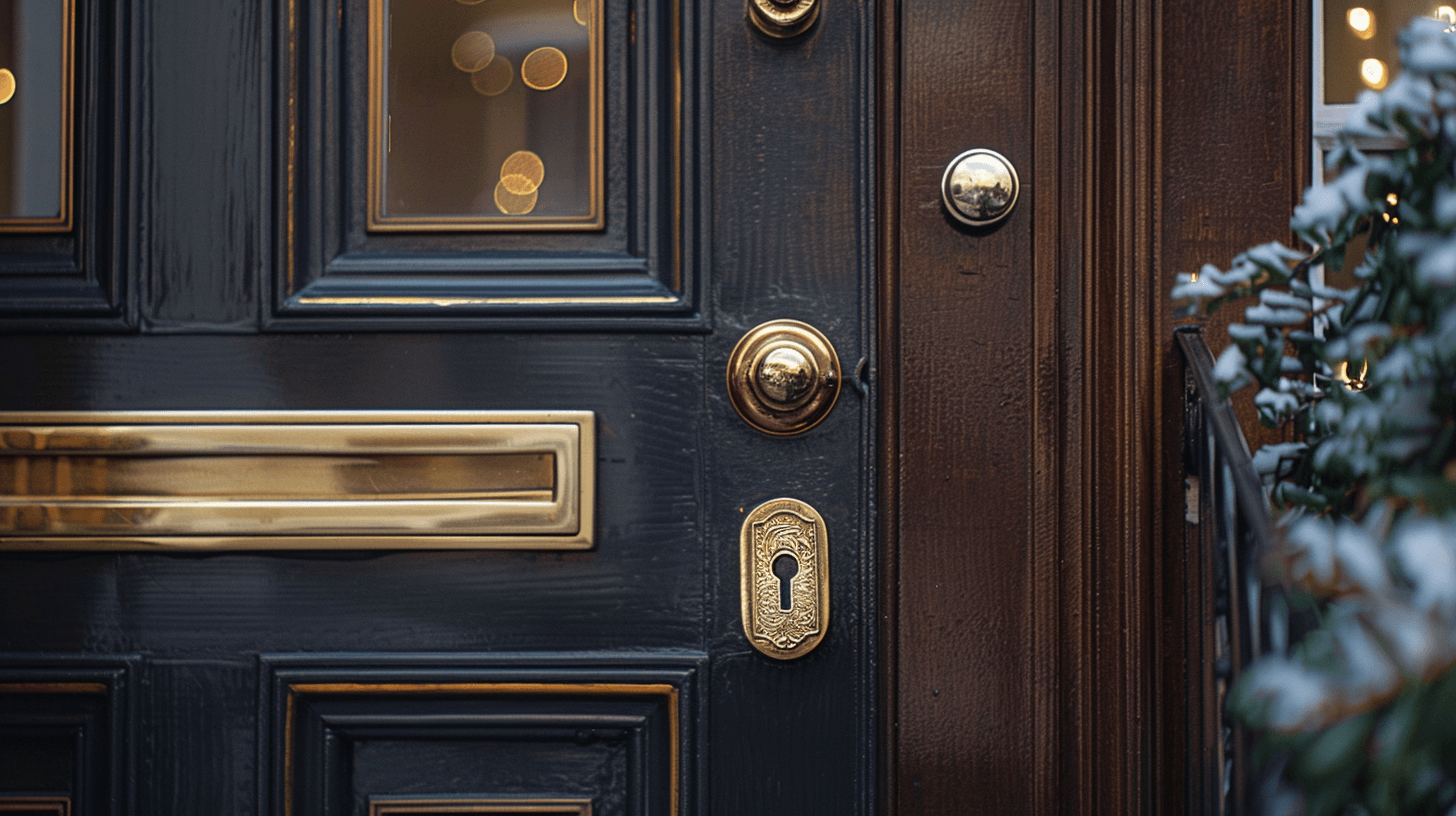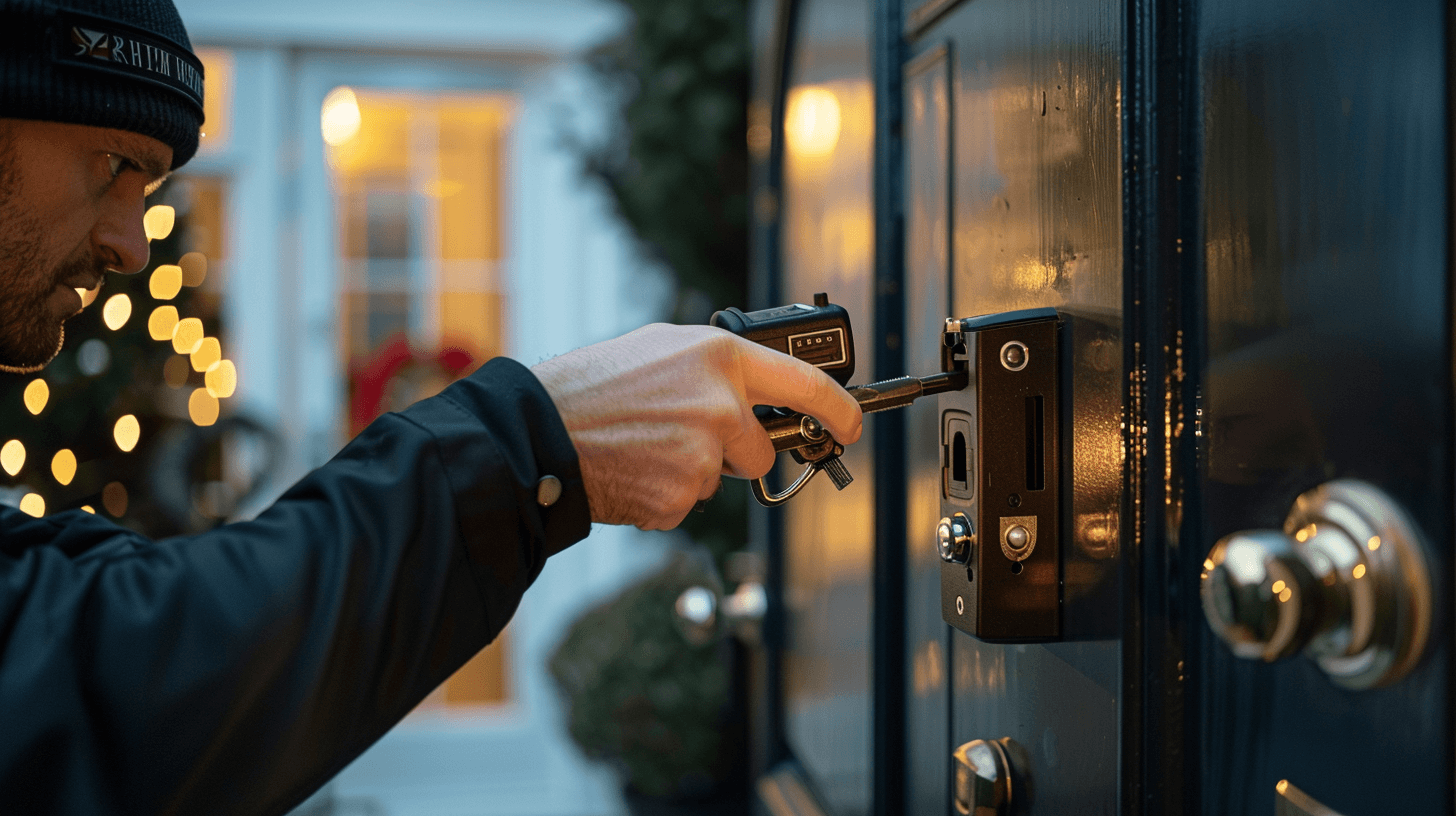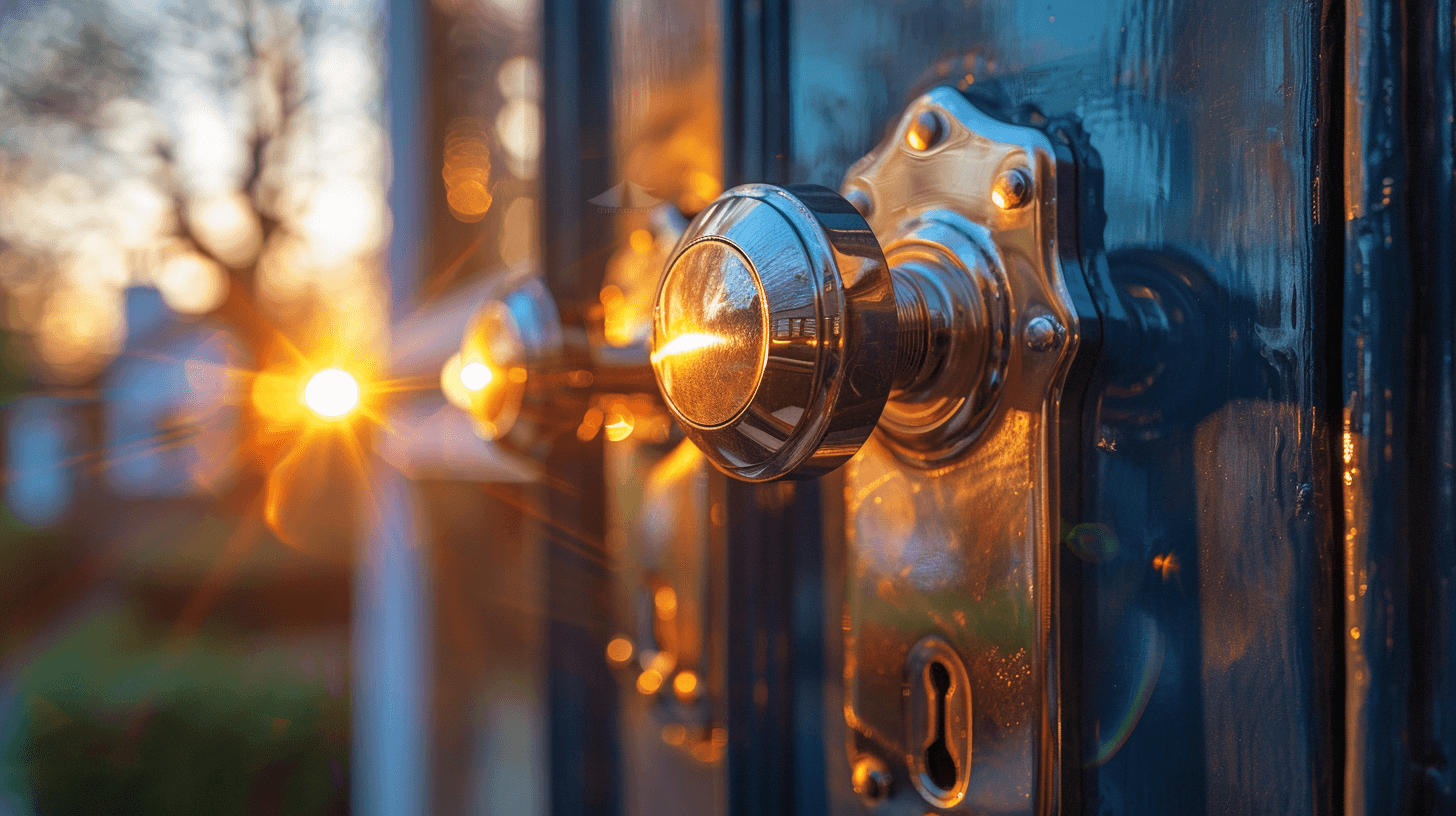 What Factors Should You Consider When Upgrading Your Locks
What Factors Should You Consider When Upgrading Your Locks

Evaluating Current Security and Risks
When considering an upgrade to your property’s lock systems, it is imperative to evaluate the current security measures against emerging threats. Traditional locks may no longer suffice in the face of sophisticated burglary techniques. It is essential to identify any vulnerabilities within existing locking mechanisms, such as susceptibility to lock picking, bumping, or unauthorised key duplication.
Advancements in Lock Technology
Recent advancements in lock technology offer enhanced security features. Smart locks provide keyless entry and the ability to monitor access remotely, while biometric locks add a layer of personalised security through fingerprint or retina scanning. These technologies not only bolster security but also bring convenience and modernization to your property’s access control systems.
“All Service 4U” Security Assessment
All Service 4U specialises in assessing and upgrading security systems to mitigate risks effectively. Their approach involves a comprehensive evaluation of your current lock systems, followed by recommendations tailored to your specific security needs. By considering factors such as the property’s location, access frequency, and potential security threats, “All Service 4U” ensures that the recommended lock upgrades align with the latest security standards and technologies.
Budget Considerations for Upgrading Locks

When contemplating the enhancement of your property’s security through lock upgrades, the financial aspect plays a pivotal role. Upgrading to high-security locks involves an initial investment, but it is essential to weigh this against the long-term benefits and potential cost savings.
Analysing Cost Implications
The transition to advanced locking systems, such as smart locks or biometric systems, requires a careful examination of both upfront costs and long-term financial implications. High-security locks often come with a higher price tag due to their sophisticated technology and enhanced materials.
Balancing Quality and Affordability
It is crucial for you to strike a balance between obtaining a high-quality lock that provides robust security and finding a solution that aligns with your budgetary constraints. Consider locks that offer the best combination of security features and longevity without exceeding your financial limits.
Realising Long-Term Savings
Energy-efficient lock options, such as those with power management features, can contribute to long-term savings. These locks minimise energy consumption, reducing ongoing costs associated with battery replacements or electricity usage.
Influence of Budget Allocation
Your budget allocation can significantly influence the type of lock you choose. Allocating funds wisely can ensure you invest in a lock system that not only secures your property but also offers features like remote access control and integration with existing security systems, adding value to your investment.
By carefully considering these financial aspects, you can make an informed decision that ensures your property’s security is upgraded without compromising on quality or financial viability.
Aligning Lock Aesthetics with Property Design

The visual impact of lock systems on your property is a significant consideration. Locks should not only secure your premises but also complement and enhance the overall aesthetic.
Complementing Modern Business Premises
For contemporary business environments, the selection of lock styles that blend with the architectural design is essential. Sleek electronic or smart locks often suit modern decor, offering a sophisticated look while providing robust security.
Balancing Functionality and Visual Appeal
High-security locks can indeed be both visually appealing and functional. Manufacturers are increasingly focusing on design, offering a range of finishes and styles that align with diverse property aesthetics without compromising on security features.
Enhancing Property Aesthetics with Secure Locks
To ensure lock upgrades augment the visual appeal of your property, consider the finish and design that best match your doors and architectural style. Locks should serve as both a security feature and a design element, contributing to the property’s overall curb appeal.
By prioritising both the security and the design aspects of lock systems, you can achieve a harmonious balance that safeguards your property while maintaining its visual integrity.
Assessing Maintenance Needs for Advanced Lock Systems

Maintenance is a critical factor when upgrading to advanced lock systems. The longevity and reliability of your security investment hinge on understanding the maintenance requirements of different lock technologies.
Durability and Long-Term Costs
Lock durability directly influences long-term property management expenses. High-quality materials and robust lock mechanisms can reduce the frequency and cost of maintenance. It is prudent to consider locks made from corrosion-resistant materials like stainless steel or brass, which offer longevity even in harsh environmental conditions.
Wear and Tear Resistance
The choice of lock materials and types is paramount in resisting wear and tear. For instance, deadbolts are renowned for their strength, while electronic locks require different maintenance, such as battery replacement or software updates.
Variance in Maintenance Across Technologies
Maintenance requirements can vary significantly between mechanical and electronic lock systems. Traditional key locks might need occasional lubrication and cleaning, while smart locks might necessitate firmware upgrades and troubleshooting connectivity issues. Biometric systems, on the other hand, may require recalibration to ensure accurate readings.
By selecting locks that align with your maintenance capacity and understanding the long-term care each type requires, you can ensure the security of your property remains uncompromised over time.
Enhancing User Experience Through Accessible Lock Systems

Selecting the right lock system is not solely about security; it’s also about ensuring ease of access for all users. The user experience is paramount, and lock systems should be intuitive and accommodating to diverse needs.
Features of User-Friendly Locking Systems
User-friendly locks typically feature simple interfaces, allowing quick and effortless access. For electronic and smart locks, this may include keypad entry with tactile buttons or touchscreens that provide clear visual and audio feedback. The goal is to minimise the time and complexity involved in operating the lock, thereby enhancing the user experience.
Accessibility for Individuals with Disabilities
Lock systems must cater to individuals with disabilities, adhering to standards such as the Americans with Disabilities Act (ADA). This includes locks that are operable with one hand and do not require tight grasping, pinching, or twisting of the wrist. Locks should be installed at an accessible height, and electronic locks should offer alternative access methods, such as voice control or large, easy-to-read buttons.
The Role of “All Service 4U” in Seamless Access Control
“All Service 4U” plays a critical role in ensuring that the locks installed provide a seamless experience. The company assesses the specific needs of the property and its users, recommending lock systems that offer both security and convenience. With a focus on customer satisfaction, “All Service 4U” ensures that the lock systems are not only installed professionally but also meet the highest standards of user accessibility and ease of use.
Adhering to Legal Standards for Lock Systems

Understanding Legal Requirements
Commercial properties are subject to stringent legal requirements regarding lock systems. These regulations are designed to ensure the safety and accessibility of the premises for all occupants. Property owners must familiarise themselves with these mandates to ensure compliance and avoid potential legal ramifications.
Influence of Fire Codes and Safety Regulations
Fire codes and safety regulations have a direct impact on lock selection. Locks must allow for safe egress in the event of an emergency while preventing unauthorised entry. It is imperative that locks on fire exits are easily operable from the inside without the need for a key.
Ensuring Accessibility for All Users
Accessibility standards, such as those outlined in the Americans with Disabilities Act (ADA), mandate that lock systems are usable by individuals with disabilities. This includes considerations for lock height, operation mechanisms, and the force required to use them.
Certifying Regulatory Compliance
To certify that lock systems meet or exceed regulatory standards, property owners should consult with certified locksmiths or security experts. These professionals can provide guidance on compliant lock systems and may offer certification services to verify that installations adhere to all relevant codes and standards. Regular audits and updates to security systems are also advisable to maintain compliance as standards evolve.
Embracing Innovations in Smart Lock Technology

The landscape of lock technology is rapidly evolving, with smart locks leading the charge in innovation. These devices offer enhanced security features and convenience, revolutionising the way you secure your property.
Advancements in Smart Lock Capabilities
Smart locks have transcended traditional locking mechanisms, offering features such as remote access, real-time alerts, and integration with other smart home devices. The latest models boast improved battery life, stronger encryption protocols, and sleeker designs that blend seamlessly with modern decor.
Biometric Systems: Personalization Meets Security
Biometric locks utilise unique personal attributes, such as fingerprints or retina scans, to grant access. This technology not only bolsters security by eliminating the risk of lost or stolen keys but also offers a personalised user experience.
Integration with Home Automation Systems
Integrating locks with home automation systems is a forward-thinking move that ensures cohesive operation within your smart home ecosystem. When selecting a lock, consider compatibility with existing devices and the ability to control and monitor your lock through a centralised platform.
The Impact of Technology on Lock Security
The infusion of technology into lock systems has created a dual benefit of heightened security and user convenience. Smart locks, equipped with features like audit trails and automatic locking, provide peace of mind while simplifying access management. As technology advances, these systems are set to become even more intuitive and secure, making them a prudent choice for those looking to upgrade their locks.
Selecting Weather-Resistant Lock Features

Environmental factors play a crucial role in the selection of lock materials and features. Locks exposed to harsh weather conditions require specific attributes to maintain functionality and durability.
Influence of Climate on Lock Material Choice
The choice of lock materials should be informed by the climate in which your property is located. Materials such as stainless steel, brass, and bronze are known for their resistance to corrosion and rust, making them ideal for humid or coastal environments.
Best Practices for Lock Resilience
To ensure lock resilience across varying climates, it is recommended to opt for weatherproof and corrosion-resistant locks. Features such as protective coatings and seals can prevent moisture ingress and minimise the impact of temperature fluctuations.
Protecting Locks from Environmental Wear
Regular maintenance, including cleaning and lubrication, can extend the life of your locks. For properties in areas prone to dust and sand, locks with dust covers can provide additional protection. In freezing conditions, locks with anti-freeze properties are essential to prevent the locking mechanism from seizing.
By considering these environmental factors and selecting appropriate lock features, property owners can safeguard their security investments against the elements.
Adherence to Global Security Standards

When upgrading your locks, it is imperative to consider global security standards that ensure the highest level of protection for your property.
Understanding ANSI/BHMA Grading
The American National Standards Institute (ANSI) and Builders Hardware Manufacturers Association (BHMA) grading system is a critical benchmark for lock security. This grading system evaluates locks on their ability to withstand force, durability, and longevity:
- Grade 1: The highest level of security available, suitable for commercial properties.
- Grade 2: Intermediate security, often used in residential and light commercial applications.
- Grade 3: Basic security, providing minimal resistance to intrusion.
Certifications Indicating Security and Reliability
Certifications from recognised standards organisations provide assurance of a lock’s security and reliability. Look for certifications such as:
- UL Listing: Indicates a lock has been tested for safety by Underwriters Laboratories.
- ISO Certification: Shows compliance with international industry and regulatory standards.
Verifying Lock Security Standards
To verify the security standards of your locks, you can:
- Check for visible certification marks on the lock hardware.
- Request detailed product specifications from the manufacturer.
- Consult with a certified locksmith or security expert who can confirm the lock’s adherence to security standards.
By selecting locks that meet these rigorous standards, you ensure enhanced security and peace of mind.
Assessing Insurance Benefits with Upgraded Locks

Upgrading to high-security locks can lead to favourable insurance premiums and coverage options. Insurance providers often recognise the reduced risk of break-ins with advanced lock systems and may offer discounts or improved terms as a result.
Role of Locks in Insurance Claims
In the event of a security breach, the type of locks installed can influence the outcome of insurance claims. Providers may require evidence that all reasonable security measures were in place, including the use of certified locks that meet industry standards.
Leveraging High-Security Locks for Insurance Advantages
Property owners can negotiate better insurance terms by demonstrating the installation of high-security locks. Insurers may consider these upgrades as proactive measures, potentially leading to lower premiums and enhanced coverage options.
Documentation for Insurance Providers
To validate the security enhancements to insurers, property owners should maintain:
- Purchase receipts and warranties of the locks.
- Certificates of installation from licenced professionals.
- Any relevant certifications or grades from recognised standards organisations, such as ANSI/BHMA.
By providing this documentation, property owners can substantiate the security upgrades, facilitating the insurance process and reinforcing the property’s defence against potential intrusions.
Anticipating the Evolution of Lock Technology

The security landscape is continuously evolving, with technological advancements shaping the future of lock systems. Property owners must remain informed about these trends to ensure their security measures are not rendered obsolete.
Trends Influencing Lock Upgrades
Current trends in lock technology include the integration of smart home ecosystems, the rise of biometric authentication, and the development of advanced encryption methods for wireless communication. These innovations offer both enhanced security and user convenience.
Preparing for Future Security Needs
To stay ahead, property owners should consider lock systems that offer firmware updates to combat emerging threats. Scalability is also crucial; choose locks that can integrate with future technological advancements and expand as security needs grow.
Considerations for Scalability and Upgrades
When planning for future lock upgrades, consider the ease of integration with existing systems, the flexibility to add new users or access points, and the ability to upgrade firmware or software as needed.
“All Service 4U” and Future Security Preparedness
“All Service 4U” assists businesses in navigating these future challenges by providing expert advice on the latest security technologies. They offer solutions that are not only robust today but also adaptable to tomorrow’s security landscape, ensuring long-term protection for your property.
Partnering with “All Service 4U” for Lock Upgrades

Comprehensive Lock Upgrade Services
“All Service 4U” offers a full suite of services to enhance the security of your property through state-of-the-art lock upgrades. Their expertise extends to:
- Consultation: Assessing current security systems and recommending optimal lock upgrades tailored to your specific needs.
- Installation: Professional installation of a wide range of locks, from traditional deadbolts to advanced smart lock systems.
- Maintenance: Ongoing support to ensure your locks remain in peak condition, including regular servicing and emergency repairs.
Gaining a Competitive Edge in Security
By choosing “All Service 4U,” you benefit from:
- Expertise: Their team of certified locksmiths brings extensive knowledge of the latest lock technologies and security trends.
- Quality: Only the highest-grade locks are selected, meeting global security standards for maximum protection.
- Efficiency: Quick response times and efficient service minimise disruption to your daily operations.
Engaging with “All Service 4U”
To initiate a partnership with “All Service 4U,” property owners should:
- Contact: Reach out via their website or customer service hotline to discuss your security needs.
- Schedule: Arrange a convenient time for a security assessment and consultation.
- Customise: Work with their experts to customise a lock upgrade plan that aligns with your security objectives and budget.
With “All Service 4U,” you can confidently upgrade your property’s locks, knowing you have a partner committed to your security and satisfaction.

